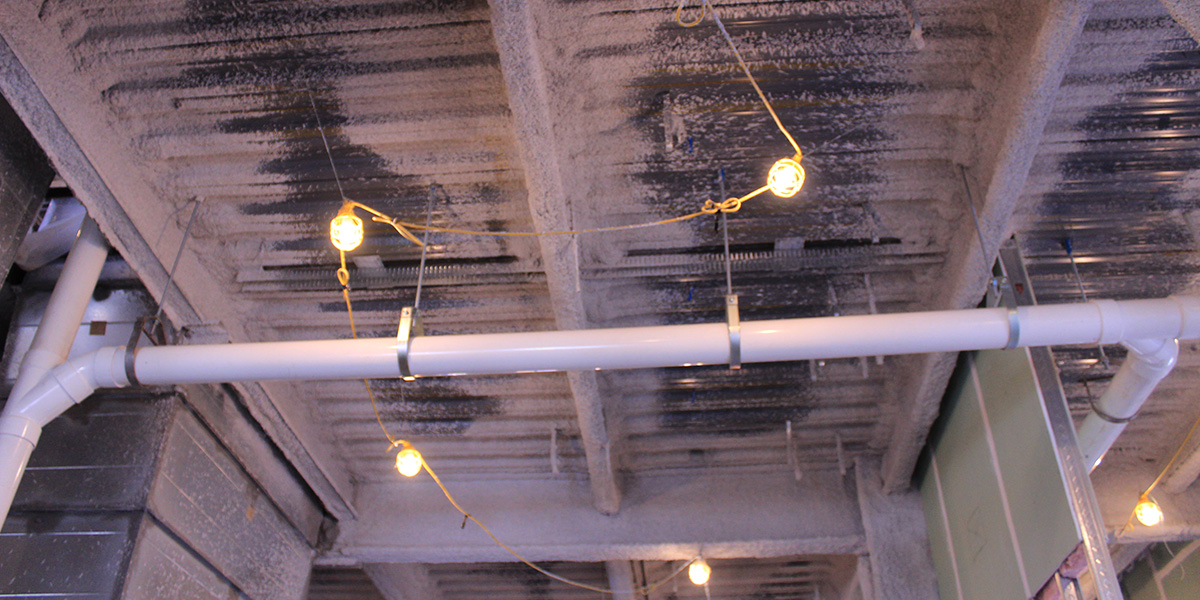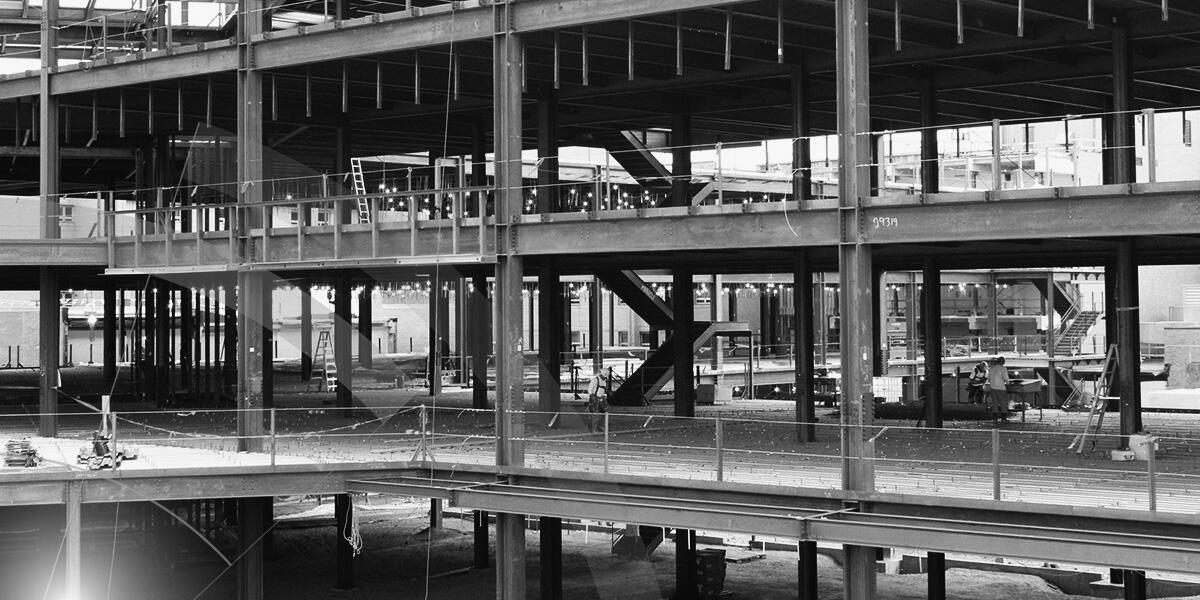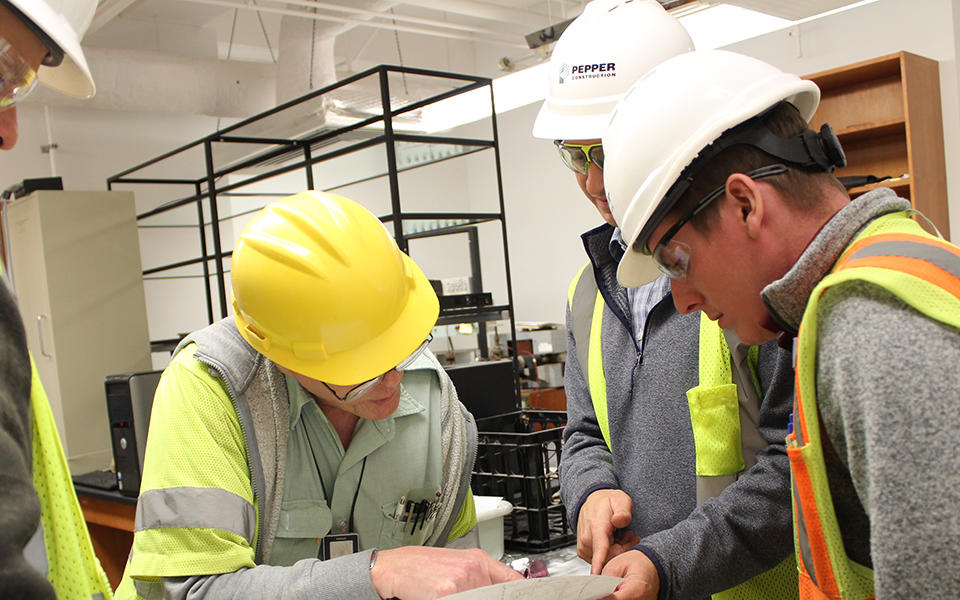Community Hospital East Campus RedevelopmentTrade partnerships, Virtual construction & technology, Quality
When it comes to customer service, we tend to think of our clients. But what about our design partners and our trade partners?
The word trade partner has become a buzzword as a substitute for subcontractor. It sounds more collaborative, but how well do we really apply the term? I believe if project teams embraced the meaning of the word whole-heartedly – treating them as a partner by seeking out and using their feedback - we could be more efficient, safer and find a better path to meeting our project goals.
In my role, I see examples of our partners contributing better solutions all the time. Since I’ve been involved on two and three-year projects most recently, it’s become clear just how important some of these solutions are to the project schedule. I know there are other great examples in our company, maybe even better than mine. So if this is my experience, I can only imagine the potential across our industry.
Changing the user experience
A few years ago, I was working on a project at Palos Community Hospital in Palos Heights, Illinois. It was a backfill renovation project that included the emergency department, and we were using design-assist to involve trade partners in the design process. In the existing space, a corridor jogged around a mechanical shaft, making a 90 degree turn and then another turn. This caused the nursing staff using the space to jog around it as well, instead of following a more direct path.
As we were coordinating the new space, the electrician (Gibson Electric) spoke up and asked a simple question: Why can’t we make the corridor run straight? Up to that point everyone assumed the shaft was an obstacle.
As a result of his question, we looked into what it would take to move the shaft, and the cost was not prohibitive. The hospital agreed it was well worth it. Had we not used design-assist to engage our trade partners, nursing staff would still be jogging around the shaft because the idea didn’t come from the architect, us or the hospital; it originated with the electrician.
A better plan for temporary lighting

Historically, temporary lighting is not well-planned and coordinated. Often as walls are framed and drywall installed, the electrical contractor is asked to move or add more lights to ensure work areas are adequately lit for drywall finishing work and to maintain a safe lighting level (3 foot candles). If it isn’t part of the scope for electricians to provide additional temporary lighting as walls go up, the finishers and interior trades will supplement with their own light stands.
On the Community Hospital East project, Miller Eads asked a simple question that will impact how we handle temporary lighting on future projects: What if we planned the temporary lighting from the beginning so it benefits everyone working through the life of the project?
With the assistance of technology, the team planned and installed temporary lighting to allow at least one light per space. The process they used is safer and faster for installation, and it provides adequate temporary lighting through the life of the job.
Each year, we award a Quality Concept of the Year. The nomination process is designed to gather best practices and lessons learned, and our quality team has turned it into a fun competition where we vote on the best ideas. This year, I submitted this temporary lighting solution, and it won. Thanks to Miller Eads, we have a better solution that that has been shared across our company and will be used on future projects.
More efficient hot work permits
For hot work, we have a permit form that contractors are required to fill out and submit to us. It takes time for them and for us to complete and send it through the approval process.
Again, on Community Hospital East, a tradesman for Leech and Russell asked if there was an app or an easier solution that would speed the process. I’m not sure if he knew one existed, but we thought it was a good idea and are looking into it. While we’re still deciding on the right solution, an app will save us a lot of time and allow our safety guys to better track the permits.
Encouraging an environment of collaboration
Our success as a general contractor is contingent on our trade partners' success. We own the schedule and drive the project, but we don’t put the work in place so we need to do what we can to make them successful.
We also need their insights. Sometimes the best ideas come from our trade partners and not us – and sometimes it’s hard for us to admit that. These examples demonstrate what happens when we create an environment where our trade partners feel like they can ask questions and offer suggestions. It also requires us to be open to adjusting the schedule to accommodate new solutions. Even when the schedule is tight, we can’t afford not to.
Collaborative delivery methods encourage innovative ideas such as these. If we drive our projects from the top, down, these questions don’t get asked. I believe that by encouraging ideas from the tradespeople putting work in place, we will push our projects to be safer, more productive and profitable.




